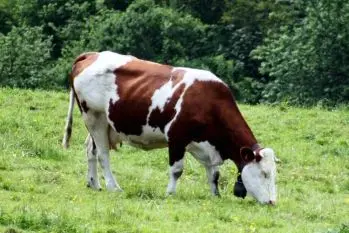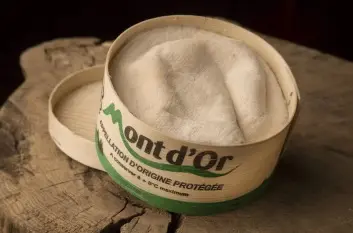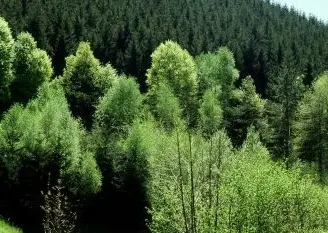This site uses only a few technical cookies necessary for its operation. By continuing to browse, you accept their use.
To find out more...
To find out more...
In praise of Mont d'Or cheese

Do you know the Mont d'Or, this extraordinary cheese from the Haut-Doubs in France, with a unique taste and appearance, which can be eaten both raw and cooked?
I'll tell you a few words about it, and with some tips on how to choose it and cook it.
I'll tell you a few words about it, and with some tips on how to choose it and cook it.
13 K 5/5 (14 reviews)
Keywords for this post:CheeseFranche-comtéJuraDoubsCreamyVacherinLast modified on: November 27th 2021
In praise of Mont d'Or cheese
What is Mont d'Or?
The Mont d'Or is a cheese that comes exclusively from a small area of appellation that is located in the upper part of the Doubs department, in Franche-Comté, in the Jura mountains.It is a cow's cheese, whose milk, raw only, is strictly controlled: Montbéliarde or "pie rouge de l'est" breed exclusively, grass/hay feed only, no silage, and a production area delimited in surface and in altitude, 700 meters minimum.

It is also a seasonal cheese, it is only produced from 15 August to 15 March and only sold from 10 September to 10 May approximately, these dates are under the jurisdiction of the Prefect of the Doubs who publishes a decree each year authorising both.
Yes, it is a regulated cheese...
Add to all its specificities a unique packaging, the cheese is put in a spruce box, in which it is surrounded by a strap of inner bark of spruce, the liber.
This strap is collected by people called "sangliers" or "sanglières", just after the felling of the spruce trees and before their skidding, it contributes to the taste of the cheese, woody of course.

Once the scene is set, what do we have?
A rather exceptional cheese, AOC in 1981 and AOP in 1996, known since the Middle Ages, creamy, tasty and made only with good raw milk from local cows, which only graze, and always have horns and bells, the "clarines".
How to choose it?
Since it is strictly regulated and protected, you have very little risk of being cheated, just check on the box where it comes from, make sure it has a postcode starting with 25 or 39.You can easily find it in supermarkets, or better still at your local cheese shop.
At the beginning of its maturity the Mont d'Or is quite flat, then as it matures the top of the cheese becomes more undulating, creating "waves" that the people of France call "fesses" (buttocks), "A good Mont d'Or must have beautiful fesses" they like to say...
So if you have an irregular top of cheese (like on the picture below) it's a good sign, it is mature.

Keep it in the fridge if it is already well advanced, at room temperature or in the fridge if it is a bit young.
Tasting
If you eat it cold, like a classic cheese, it must be at room temperature and well done, it is then very creamy, almost runny.Traditionally, it is tapped vertically with a (small) spoon to serve it to yourself, no chunks are cut off like for a Camembert for example.
As with all cheeses, choose a bread of your own taste, a gogod one made by your baker, if possible with sourdough, but this is a very personal taste.

If you eat it hot, it is the famous "hot box", in this case put your oven at 360°F (180°C) and put your potatoes in.
After 15 minutes, add the Mont d'Or in its box, until it is melted and the top crust is well toasted, usually the potatoes are cooked at the same time.

Traditionally, before putting the cheese in the oven, make a small hole in the middle with a spoon, and fill the cavity with dry white wine, from the Jura if possible.
Discreetly devour the piece of cheese removed on a small piece of bread, while serving yourself a glass of the same wine, guaranteed pleasure, certainly a little selfish, but it is the privilege of the one who puts the cheese in the oven.
Note that 360°F (180°C) is the right temperature, beyond that the cheese in a too hot oven can slice and dissociate.
Place the potato dish, the Mont d'Or and any delicatessen in the middle of the table, then each person helps himself or herself by peeling and cutting the potatoes and sprinkling them with melted cheese.
Always serve the same wine to your guests, and enjoy this fabulous moment of sharing...
I'll end by telling you that our Swiss neighbours make a very similar cheese which they call "Vacherin mont d'or", but which can be made from thermised milk, not just raw milk.
On the other hand, their AOP requires them to have locally produced straps, so Swiss or French, while some big French cheese factories buy cheap straps from Eastern Europe, for a question of cost of course.
What a pity this sad commercial logic, with all the spruce forests around.

In summary: Mont d'or is an extraordinary creamy and tasty cheese, which can be eaten both raw and cooked.
PS: If you taste Mont d'Or with a "traditional French" baguette (the best ones), not only is it delicious, but you will also be tasting the only bread-cheese association in the world that is regulated, as both this cheese and this bread are subject to regulations (decree and order). In France, food is a very serious matter...
Lasts posts
Butter vs. grease
We often read in a recipe where a pastry is put into a mould that, just before pouring, the mould should be buttered or greased. But what's the difference between these 2 terms?December 1st 20251,8585
Getting out of the fridge early
Very often when you're cooking, you need to take food or preparations out of the fridge, to use them in the recipe in progress. There's nothing tricky about this: you just take them out of the fridge and use them, usually immediately, in the recipe. But is this really a good method?November 24th 20251,3585
Who's making the croissants?
When you look at a bakery from the outside, you naturally think that in the bakery, the bakers make the bread, and in the laboratory, the pastry chefs make the cakes. It's very often like that, with each of these professions having quite different ways of working, but sometimes there's also one...November 23th 20251,256
Oven height
When we put a dish or cake in the oven, we naturally tend to put it on the middle shelf, and that's what we usually do. But in some cases, this position and height can be a little tricky, so let's find out why.October 8th 20253,7545
The importance of sieving
In recipes that use a fine powder (flour, powdered sugar, etc.), you'll often see the advice to sift before using it. To sift is to pass the powder in question through a sieve (a very fine strainer) before incorporating it into your recipe. It's often advice, but is it really useful?September 3rd 20258,2303
Other pages you may also like
Butter doesn't make you fat, unless you eat too much of it.
Whenever I'm discussing cooking and recipes, there is one idea which comes up frequently, like this: "Oh no! But that's got butter in it" (I should add, for the sake of accuracy, that this is something I hear more frequently from women, who are almost all concerned with keeping their figure). ...March 26th 201245 K4.5
The first breads of humanity?
I have already told you in a previous article the beautiful story of the croissants, but do you know what it is about the bread, who "invented" it, where and when? Well, you can imagine that recent discoveries, in 2018, have profoundly changed the history of bread.February 16th 201914 K5
Incise some meats before cooking
Have you ever had this rather unpleasant phenomenon: you grill a meat, a pork chop or a veal cutlet for example, and during cooking it becomes completely deformed? It takes a very strange shape, a bit difficult to describe, a sort of cone around the central area of the meat, which also hinders...June 19th 202112 K4.9
Divide and weigh dough into regular pieces
When you prepare dough for cupcakes in a pastry shop or bakery, at some point you're going to have to divide it, i.e. cut it into small pieces, which should all have the same weight. Sounds simple enough, but is it really that simple?May 30th 202312 K5
Half milk, half cream
In a multitude of recipes, savoury or sweet, milk is used as the main ingredient, or at least as the main liquid ingredient. Milk is used instead of water, for example, because milk contains a proportion of fat, which adds roundness and softness to the recipe. This mellowness is very pleasant on...February 27th 20249,6245
Post a comment or question
Follow this page
If you are interested in this page, you can "follow" it, by entering your email address here. You will then receive a notification immediately each time the page is modified or a new comment is added. Please note that you will need to confirm this following.
Note: We'll never share your e-mail address with anyone else.
Alternatively: you can subscribe to the mailing list of cooling-ez.com , you will receive a e-mail for each new recipe published on the site.









